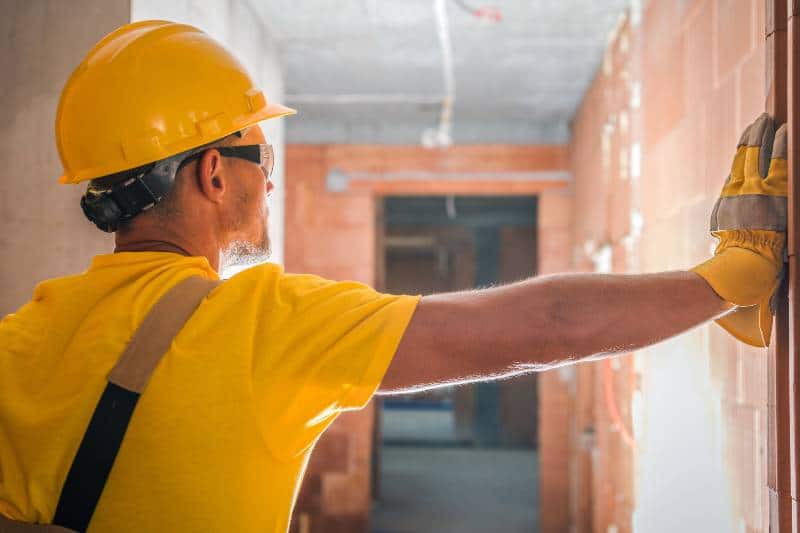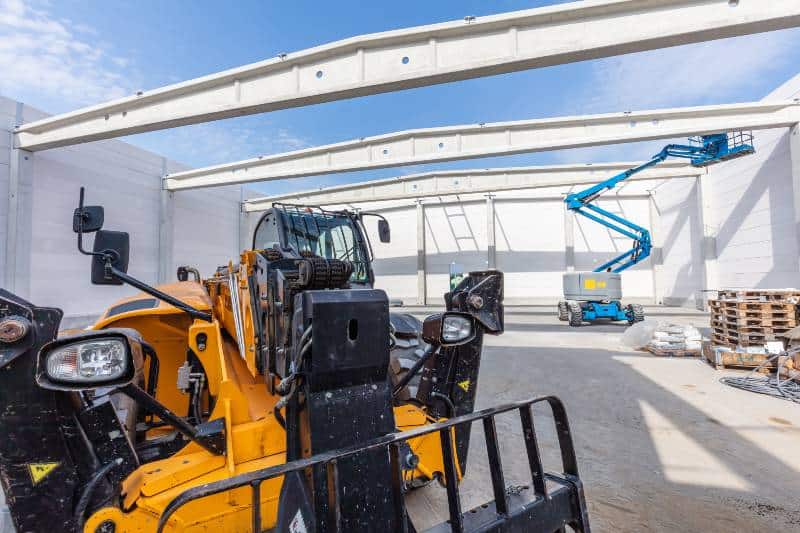Hey there, fellow property enthusiasts! It’s your pal Mike Tolj, and today, I want to chat with you about something that’s been on my mind lately: sustainable property management. As someone who’s been in the commercial real estate game for over 18 years, I’ve seen firsthand how embracing sustainability can work wonders for your bottom line and the planet.
In this ultimate guide, we’ll dive deep into the world of eco-friendly property management. We’ll explore the benefits, strategies, and best practices that can help you create a thriving, sustainable property portfolio. Whether you’re a property owner, manager, or tenant, there’s something in here for everyone. So, grab a cup of coffee, sit back, and let’s embark on this green journey together!
Key Takeaways
- Sustainable property management offers a multitude of benefits for property owners, managers, and tenants alike
- Implementing eco-friendly practices can lead to significant cost savings, improved tenant satisfaction, and higher property values
- Developing a comprehensive sustainability strategy is crucial for achieving long-term success in sustainable property management
Understanding Sustainable Property Management
Before we get into the nitty-gritty, let’s take a moment to define what we mean by sustainable property management. In a nutshell, it’s all about managing properties in an environmentally responsible, socially conscious, and economically viable way. It’s a holistic approach that considers the three pillars of sustainability: people, planet, and profit.
So, why is sustainable property management such a big deal? Well, for starters:
- It can help you save money on energy, water, and waste management costs
- It can attract environmentally conscious tenants who are willing to pay a premium for green features
- It can boost your property’s value and marketability
- It can contribute to a healthier, more resilient community
Plus, with the ever-evolving regulatory landscape, embracing sustainability is no longer just a nice-to-have—it’s becoming a must-have. By staying ahead of the curve, you can ensure that your properties remain compliant and competitive in the years to come.
Developing a Sustainable Property Management Strategy
Now that we’re on the same page about what sustainable property management is and why it matters, let’s talk about how to make it happen. The first step is to develop a solid sustainability strategy. Here’s how:
- Conduct a sustainability assessment: Take stock of your current practices and identify areas for improvement. This could involve energy audits, waste audits, and tenant surveys.
- Set goals and targets: Based on your assessment, establish clear, measurable goals for reducing energy and water consumption, minimizing waste, and enhancing indoor environmental quality. Make sure your targets are realistic and aligned with your overall business objectives.
- Create a sustainability action plan: Break down your goals into specific, actionable steps. Assign responsibilities, timelines, and budgets for each task. Don’t forget to include milestones and metrics to track your progress along the way.
- Engage stakeholders and build partnerships: Sustainability is a team sport. Involve your tenants, employees, and service providers in the process. Seek out partnerships with local organizations, utilities, and green building experts who can provide valuable resources and support.
Remember, developing a sustainable property management strategy is not a one-and-done deal. It’s an ongoing process that requires continuous monitoring, evaluation, and adjustment. By staying flexible and adaptable, you’ll be better equipped to navigate the challenges and opportunities that come with going green.
Energy Efficiency
When it comes to sustainable property management, energy efficiency is often the first thing that comes to mind—and for good reason. By reducing your energy consumption, you can slash your utility bills, shrink your carbon footprint, and create a more comfortable environment for your tenants. Here are some key strategies to consider:
- Upgrade to energy-efficient lighting and appliances: Replace old, inefficient fixtures with LED bulbs and Energy Star-certified appliances. These simple swaps can lead to significant savings over time.
- Implement smart home technology and energy management systems: From programmable thermostats to occupancy sensors, there are plenty of high-tech tools that can help you optimize your energy use. Consider investing in a comprehensive energy management system that can monitor and control your building’s performance in real time.
- Explore renewable energy options: Installing solar panels, wind turbines, or geothermal systems can help you generate your own clean energy and reduce your reliance on the grid. While the upfront costs may be higher, the long-term benefits can be substantial.
- Conduct regular energy audits and benchmarking: You can’t manage what you don’t measure. Regularly assess your energy performance and compare it against industry benchmarks. This will help you identify opportunities for improvement and track your progress over time.
- Retrofit and upgrade existing buildings: Even if you’re not starting from scratch, there are plenty of ways to make your existing properties more energy-efficient. From adding insulation to upgrading windows and HVAC systems, strategic retrofits can go a long way in reducing your energy costs and enhancing your building’s performance.
Water Conservation
While energy efficiency often steals the spotlight, water conservation is an equally important aspect of sustainable property management. By reducing your water consumption, you can lower your utility bills, conserve a precious resource, and demonstrate your commitment to environmental stewardship. Here are some strategies to consider:
- Install low-flow fixtures and toilets: Upgrading to low-flow showerheads, faucets, and toilets can significantly reduce your water usage without sacrificing performance or comfort.
- Implement rainwater harvesting and greywater systems: Collecting and reusing rainwater or greywater (water from sinks, showers, and laundry machines) can help you offset your potable water use and reduce your overall water footprint.
- Embrace xeriscaping and native plant landscaping: By selecting drought-resistant plants and incorporating water-efficient irrigation systems, you can create a beautiful, low-maintenance landscape that requires minimal watering.
- Conduct regular water efficiency audits: Just like with energy, regularly assessing your water performance can help you identify leaks, inefficiencies, and opportunities for improvement.
- Promote leak detection and repair: Encourage your tenants to report any leaks or drips promptly, and establish a proactive maintenance program to catch and fix issues before they become major problems.
Waste Management and Recycling
Effective waste management and recycling are essential components of sustainable property management. By reducing, reusing, and recycling your waste, you can minimize your environmental impact, save on disposal costs, and foster a culture of sustainability among your tenants. Here are some strategies to consider:
- Implement comprehensive recycling programs: Make it easy for your tenants to recycle by providing clear guidelines, ample bins, and regular pick-up services. Consider partnering with a local recycling provider to streamline the process.
- Encourage composting of food waste and organic materials: Composting not only diverts waste from landfills but also creates a valuable resource for landscaping and gardening. Consider setting up a community compost bin or partnering with a local composting service.
- Establish e-waste recycling and disposal protocols: Electronic waste, such as old computers, phones, and appliances, can be particularly harmful if not disposed of properly. Provide clear guidelines and resources for tenants to safely recycle or dispose of their e-waste.
- Develop sustainable procurement policies: When purchasing supplies or equipment for your properties, prioritize products that are recyclable, biodegradable, or made from recycled materials. This can help reduce waste and support the market for sustainable products.
- Implement construction and demolition waste management plans: If you’re undertaking any renovations or new construction projects, make sure to have a plan in place for minimizing and recycling construction and demolition waste.

Indoor Environmental Quality
Creating a healthy, comfortable indoor environment is a key aspect of sustainable property management. By prioritizing indoor environmental quality (IEQ), you can enhance tenant well-being, productivity, and satisfaction while also reducing your energy costs and environmental impact. Here are some strategies to consider:
- Choose low-VOC paints and building materials: Volatile organic compounds (VOCs) are harmful chemicals that can off-gas from paints, adhesives, and other building materials. By selecting low- or no-VOC products, you can improve indoor air quality and minimize potential health risks.
- Implement indoor air quality monitoring and improvement strategies: Regular monitoring of indoor air quality can help you identify and address any issues, such as mold, dust, or chemical contaminants. Consider investing in air purification systems or increasing ventilation to improve air quality.
- Adopt green cleaning supplies and practices: Traditional cleaning products can contain harsh chemicals that can harm human health and the environment. Switching to green, non-toxic cleaning supplies can help create a safer, healthier indoor environment for your tenants and staff.
- Incorporate biophilic design elements: Biophilic design involves bringing elements of nature, such as plants, natural light, and organic materials, into the built environment. This can help reduce stress, improve mood, and enhance overall well-being.
- Optimize thermal comfort and daylighting: Ensuring that your properties have adequate insulation, temperature control, and access to natural light can help create a more comfortable and inviting indoor environment while also reducing energy costs.
Sustainable Transportation
Sustainable transportation is an often-overlooked aspect of sustainable property management, but it can have a significant impact on your property’s environmental footprint and tenant satisfaction. By promoting and facilitating sustainable transportation options, you can reduce traffic congestion, improve air quality, and enhance the overall livability of your community. Here are some strategies to consider:
- Install electric vehicle charging stations: As electric vehicles become more popular, providing charging infrastructure can be a valuable amenity for tenants and a way to demonstrate your commitment to sustainability.
- Provide bike storage and sharing facilities: Encouraging tenants to bike instead of drive can help reduce traffic and improve health outcomes. Consider providing secure bike storage, repair stations, and even a bike-sharing program for your community.
- Promote walkable neighborhoods and public transportation access: When selecting properties or planning new developments, prioritize locations that are walkable and well-connected to public transportation. This can help reduce car dependence and enhance overall sustainability.
- Implement green lease agreements that promote sustainable transportation: Consider incorporating provisions into your lease agreements that encourage tenants to use sustainable transportation options, such as discounted transit passes or preferential parking for electric vehicles.
- Encourage carpooling and ride-sharing initiatives: Facilitate carpooling and ride-sharing among your tenants by providing resources, incentives, or even a dedicated ride-matching platform. This can help reduce single-occupancy vehicle trips and build a sense of community among tenants.
Green Building Certifications and Standards
Pursuing green building certifications and adhering to recognized sustainability standards can help validate your sustainability efforts, differentiate your properties in the market, and attract environmentally conscious tenants. Here are some key certifications and standards to consider:
- LEED certification: Leadership in Energy and Environmental Design (LEED) is a widely recognized green building rating system that assesses the sustainability of buildings across various categories, such as energy efficiency, water conservation, and indoor environmental quality.
- BREEAM certification: The Building Research Establishment Environmental Assessment Method (BREEAM) is another prominent green building certification system that originated in the UK but is now used worldwide.
- Energy Star and other green building programs: Energy Star is a U.S. government-backed program that certifies energy-efficient buildings and products. Other green building programs, such as the Living Building Challenge or Passive House, offer additional pathways to sustainability certification.
- Third-party sustainability audits and assessments: Even if you’re not pursuing a formal certification, engaging third-party experts to conduct sustainability audits or assessments can help you benchmark your performance and identify areas for improvement.
- Net-zero and carbon-neutral buildings: As the ultimate goal of sustainable building, achieving net-zero energy or carbon-neutral status can be a powerful way to demonstrate your commitment to sustainability and differentiate your properties in the market.
Sustainable Landscaping and Biodiversity
Sustainable landscaping and biodiversity conservation are important aspects of sustainable property management that are often overlooked. By incorporating eco-friendly landscaping practices and promoting biodiversity, you can create more resilient, attractive, and ecologically valuable properties. Here are some strategies to consider:
- Prioritize native and drought-resistant plant species: Native plants are adapted to local climate conditions and require less water, fertilizer, and maintenance than non-native species. Drought-resistant plants, such as succulents or native grasses, can help reduce water consumption and maintain an attractive landscape even during dry periods.
- Create pollinator gardens and green roofs: Pollinator gardens, which feature a variety of native flowering plants, can provide crucial habitat for bees, butterflies, and other pollinating insects. Green roofs, which are covered with vegetation, can help reduce stormwater runoff, improve insulation, and create additional green space in urban environments.
- Promote urban farming and community gardens: Encouraging tenants to participate in urban farming or community gardening can help build a sense of community, improve access to fresh produce, and reduce the environmental impact of food transportation.
- Implement sustainable stormwater management and permeable surfaces: Using permeable paving materials, such as porous concrete or interlocking pavers, can help reduce stormwater runoff and improve water quality. Incorporating rain gardens, bioswales, or other green infrastructure can also help manage stormwater sustainably.
- Protect and enhance local ecosystems: When developing or managing properties, strive to minimize disturbance to existing ecosystems and incorporate features that support local biodiversity, such as native plantings, wildlife corridors, or wetland restoration.
Smart Technology and Data-Driven Sustainability
Smart technology and data analytics are transforming the way we approach sustainable property management. By leveraging the power of the Internet of Things (IoT), artificial intelligence (AI), and real-time data monitoring, property managers can optimize building performance, reduce resource consumption, and enhance tenant comfort. Here are some key strategies to consider:
- Implement IoT devices for energy and water monitoring: Smart meters, sensors, and other IoT devices can provide real-time, granular data on energy and water consumption, enabling property managers to identify inefficiencies, detect leaks, and optimize resource use.
- Utilize AI and machine learning for optimization: AI-powered algorithms can analyze vast amounts of building performance data to identify patterns, predict maintenance needs, and optimize systems for maximum efficiency and comfort.
- Leverage real-time data analytics and reporting: Centralized data analytics platforms can help property managers visualize and interpret building performance data, track sustainability metrics, and generate reports for stakeholders.
- Implement predictive maintenance and fault detection: By analyzing real-time sensor data, AI-powered systems can predict when equipment is likely to fail, enabling proactive maintenance and reducing downtime and repair costs.
- Utilize occupancy sensors and adaptive controls: Smart occupancy sensors can detect when rooms or spaces are unoccupied and automatically adjust lighting, temperature, and ventilation to conserve energy. Adaptive controls can learn occupant preferences and adjust settings accordingly for optimal comfort and efficiency.
By embracing smart technology and data-driven sustainability, property managers can unlock new levels of efficiency, transparency, and performance. However, it’s important to approach these technologies strategically, ensuring that they are properly integrated, secure, and aligned with overall sustainability goals.

Marketing and Tenant Engagement
Effectively communicating your sustainability initiatives and engaging tenants in the process is crucial for building a culture of sustainability and realizing the full benefits of your efforts. Here are some strategies to consider:
- Communicate sustainability initiatives to tenants and stakeholders: Use a variety of channels, such as email newsletters, social media, or in-person events, to share your sustainability goals, progress, and success stories with tenants and other stakeholders.
- Develop eco-friendly property branding and marketing strategies: Incorporate sustainability into your property branding and marketing materials, highlighting green features, certifications, and achievements to attract environmentally conscious tenants.
- Implement green lease agreements and tenant incentives: Incorporate sustainability provisions into your lease agreements, such as requirements for energy-efficient appliances or waste reduction practices. Offer incentives, such as discounted rent or utility bills, for tenants who meet sustainability targets.
- Organize sustainable events and community outreach: Host sustainability-themed events, such as eco-fairs, green living workshops, or community cleanup days, to engage tenants and build a sense of community around sustainability.
- Develop tenant education and behavior change programs: Provide resources, such as energy-saving tips or recycling guides, to help tenants adopt more sustainable behaviors. Consider implementing a green tenant certification program or sustainability pledge to incentivize participation.
Financing Sustainable Property Upgrades
While sustainable property upgrades can yield significant long-term benefits, the upfront costs can sometimes be a barrier. Fortunately, there are a variety of financing options and incentives available to help property owners and managers invest in sustainability. Here are some key strategies to consider:
- Explore green loans and mortgages: Many financial institutions now offer specialized loan products for energy-efficient or sustainable building projects, often with lower interest rates or more favorable terms than traditional loans.
- Utilize Property Assessed Clean Energy (PACE) financing: PACE financing allows property owners to finance sustainability upgrades through a voluntary assessment on their property tax bill, which can be repaid over an extended period (up to 20 years or more).
- Take advantage of utility rebates and incentives: Many utility companies offer rebates, grants, or other incentives for energy-efficient upgrades, such as installing LED lighting, upgrading HVAC systems, or installing solar panels. These incentives can significantly reduce the upfront cost of sustainable improvements.
- Investigate tax credits and deductions: Federal, state, and local governments may offer tax credits or deductions for energy-efficient building upgrades or renewable energy installations. Consult with a tax professional to identify applicable incentives and optimize your tax strategy.
- Evaluate return on investment and payback periods: When considering sustainable property upgrades, carefully evaluate the expected return on investment (ROI) and payback period. Many sustainable improvements, such as LED lighting or low-flow fixtures, can pay for themselves through energy or water savings in a relatively short time frame.
FAQs
What are the most cost-effective sustainable upgrades for rental properties?
Some of the most cost-effective sustainable upgrades for rental properties include LED lighting, low-flow water fixtures, programmable thermostats, and energy-efficient appliances. These upgrades typically have a relatively low upfront cost and can yield significant energy and water savings over time.
How can property managers encourage tenants to adopt eco-friendly practices?
Property managers can encourage tenants to adopt eco-friendly practices by providing education and resources, such as recycling guides or energy-saving tips. Implementing green lease agreements, offering incentives for sustainable behavior, and organizing eco-friendly community events can also help foster a culture of sustainability among tenants.
What are the long-term financial benefits of investing in sustainable property management?
The long-term financial benefits of investing in sustainable property management can include lower operating costs (through reduced energy and water consumption), higher tenant retention and satisfaction, increased property value and marketability, and potential tax benefits or incentives.
How do green building certifications impact property values and rental rates?
Green building certifications, such as LEED or BREEAM, can positively impact property values and rental rates by demonstrating a commitment to sustainability, differentiating properties in the market, and attracting environmentally conscious tenants who may be willing to pay a premium for eco-friendly features.
What are some innovative technologies that can help properties become more sustainable?
Some innovative technologies that can help properties become more sustainable include IoT sensors for real-time energy and water monitoring, AI-powered building management systems, renewable energy technologies (such as solar panels or geothermal systems), and smart home devices that optimize resource consumption based on occupancy and preferences.
Conclusion
Sustainable property management is a powerful tool for driving profitability, tenant satisfaction, and environmental responsibility. By implementing the strategies and best practices outlined in this guide, you can transform your properties into models of sustainability and reap the numerous benefits that come with it.
However, embarking on this journey alone can be challenging. That’s where I come in. With my extensive experience and passion for sustainable real estate, I’m here to guide you every step of the way. Don’t wait to start your sustainability journey—schedule a consultation with me today, and let’s work together to create a brighter, greener future for your properties.
Whether you’re looking to reduce energy costs, attract environmentally conscious tenants, or enhance your property’s long-term value, I have the expertise and dedication to help you succeed. Don’t wait—take the first step towards a more sustainable future for your properties. Contact me now to schedule your consultation and embark on your sustainability journey with confidence.




